This Sourdough Starter is pretty darn easy to do and a great option for delicious homemade baked goods! A sourdough starter doesn’t have to be a chore, and the end result is worth the patience in the beginning. If you like homemade treats try my Sourdough Pretzels!
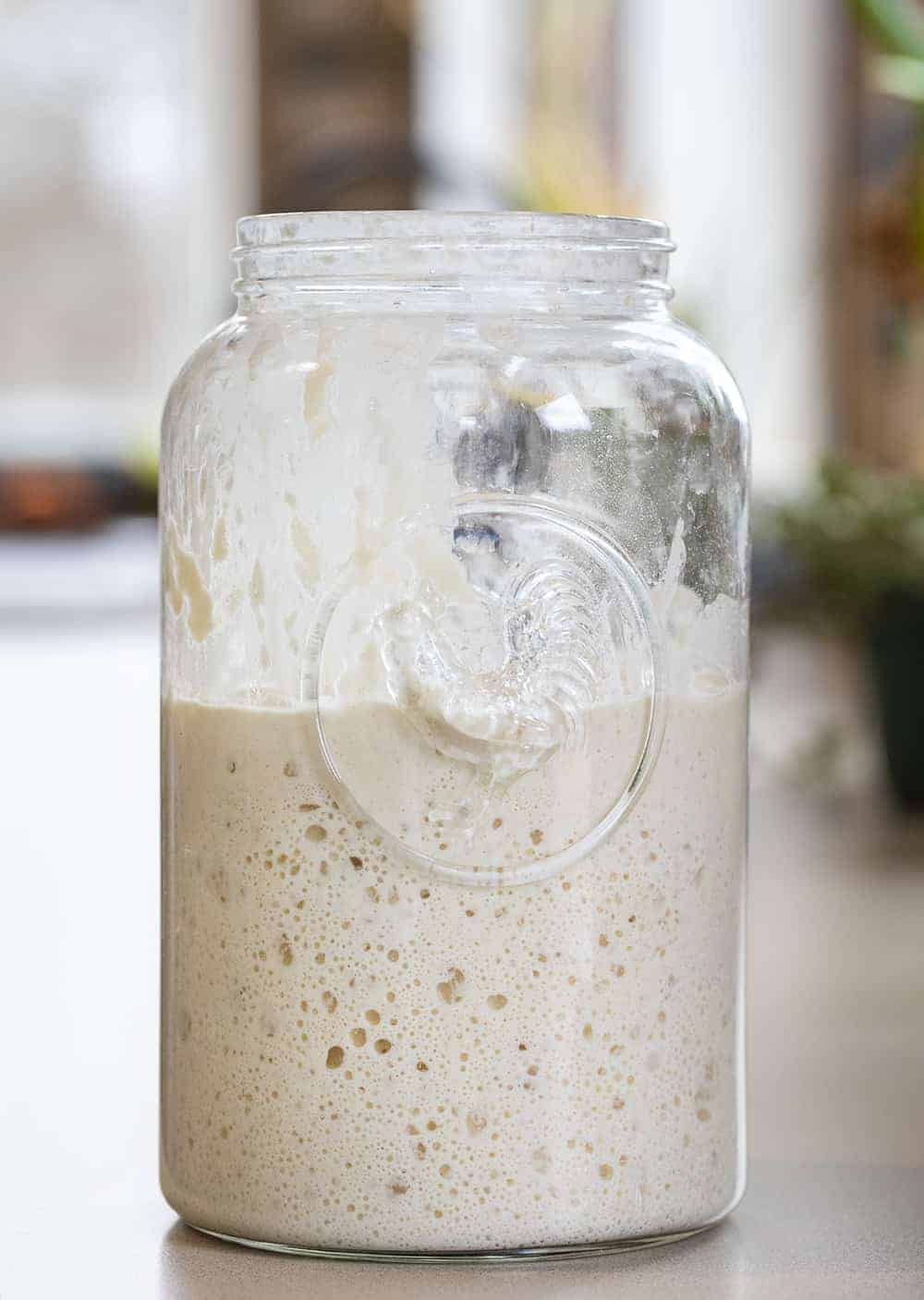
Sourdough Starter
I have to start out by saying that this is how *I* do a starter. I have watched every expert under the sun and read every book and let me tell you something… they are all different. So I have been testing and testing and retesting and using life experience to determine what works best for me. Well, I finally decided on what worked best for me, and it could not be easier and straight forward. The ingredients are simple: flour and water. And, with just two measurements to remember, the feeding is a piece of cake (or should I say bread😉) as well!
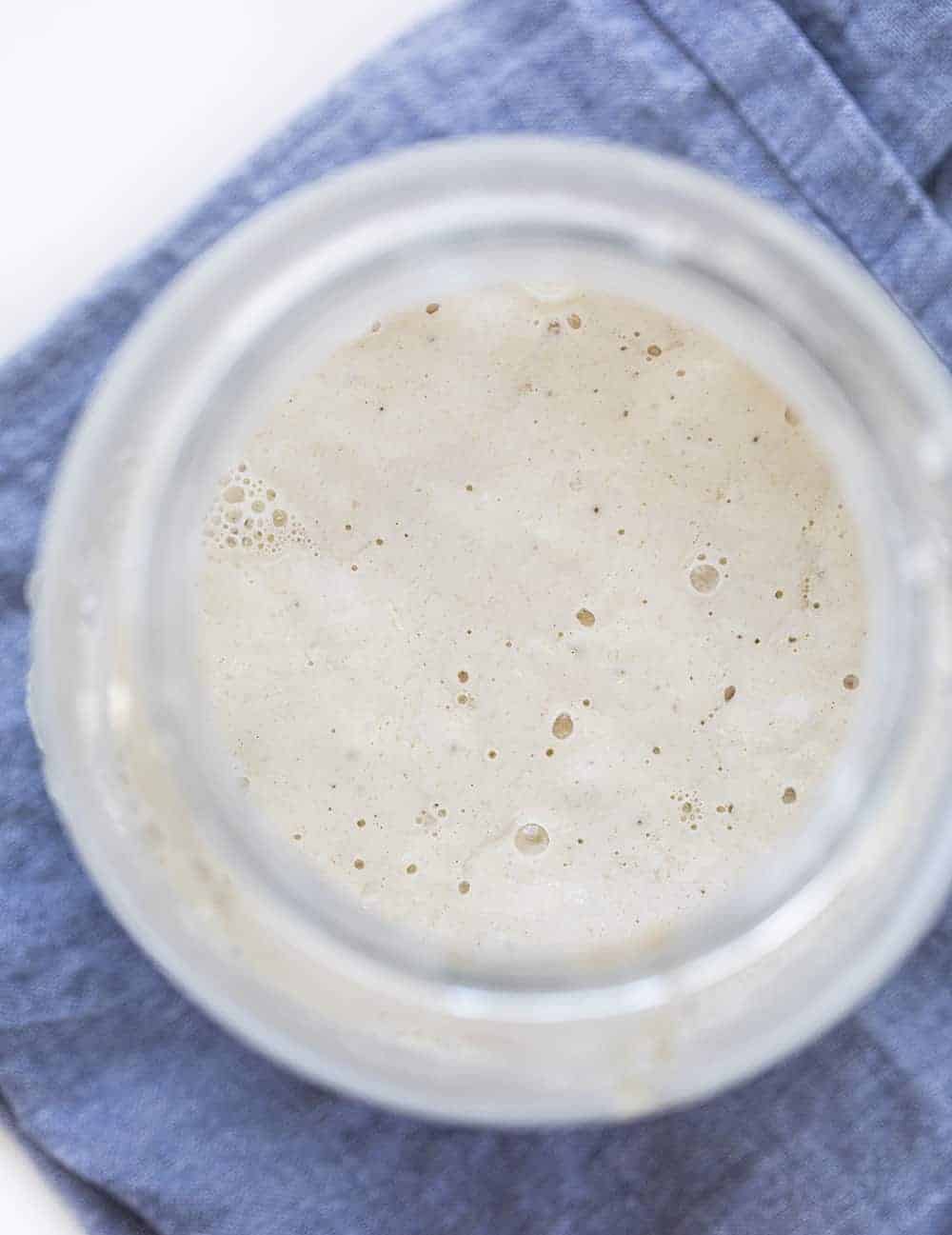
Getting your Sourdough Starter Started
Now if you want to bring science into it, the type of flour and type of water you use are important. They can produce a better product. But I am here to tell you that you can absolutely use all-purpose bleached flour from Dollar General and it will still be ok. Make sure you have the following materials and ingredients on hand:
- Jar & Lid – I prefer glass, you don’t want to use metal or plastic. If you don’t have a lid use a paper towel and rubber band. A good size jar to have on hand for a sourdough starter is a quart (32 ounces) or something close to that capacity.
- Flour – I prefer organic unbleached all-purpose, but also love whole-wheat and bread flour. Or, give rye flour a try.
- Water -Purified is best. Have chlorinated tap water (as most people do)? You can use bottled water or just set the water out uncovered for 24 hours before using it to feed your starter. This allows the chlorine to evaporate so it won’t kill the wild yeast.
That’s it for supplies! Now, let’s get to making the starter.
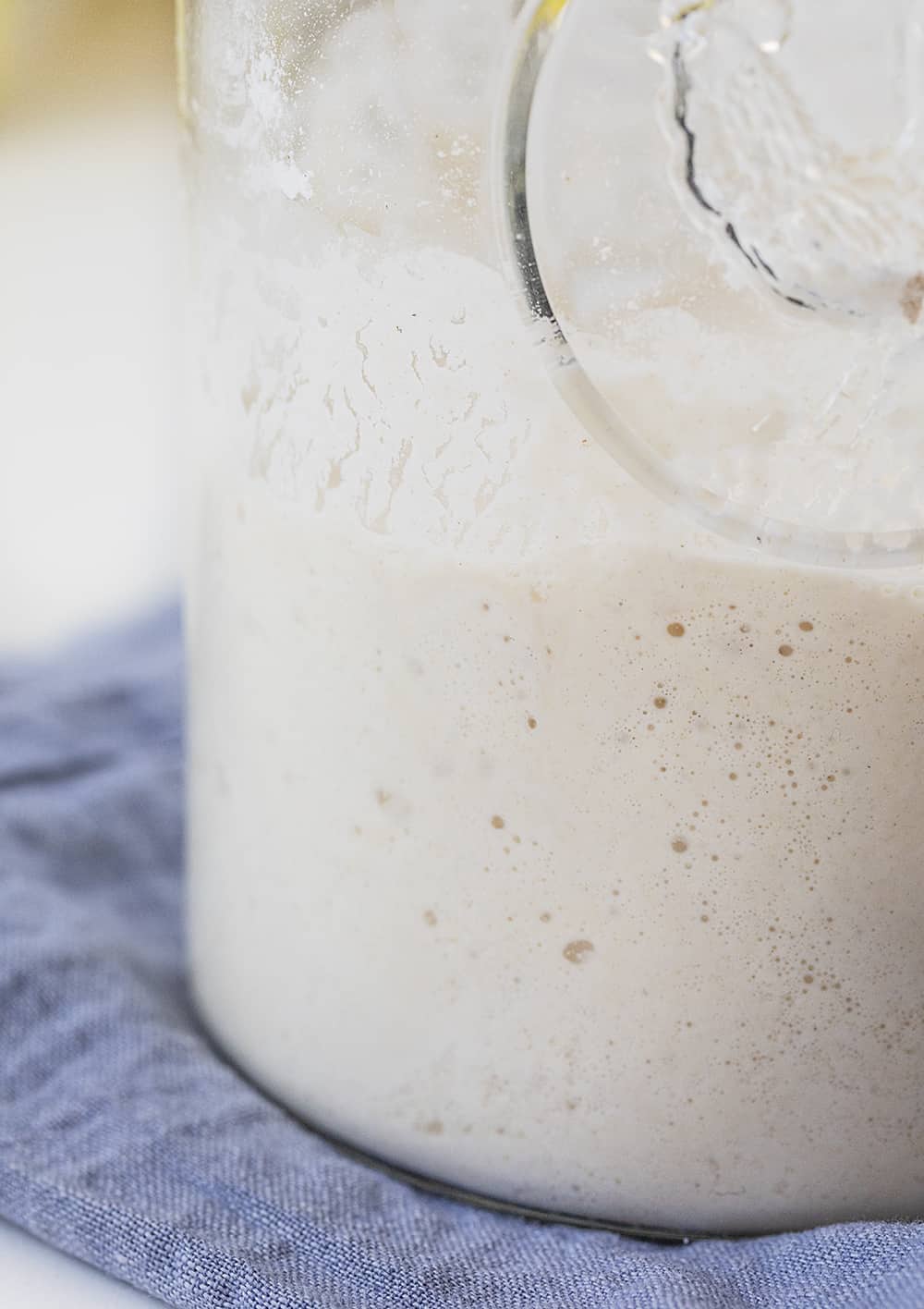
How to Make a Sourdough Starter
Remember these amounts: 1/2 cup flour and 1/4-1/3 cup water. These are the only measurements you will need to remember throughout this entire process of creating your sourdough starter. And trust me, you will use those measurements a lot with all the ‘feeding’, going on! After all, the goal is to get those microorganisms to work for that sour and fermented flavor that sourdough is known for.
To begin, add the flour and water to a jar and stir well. Try not to use a metal spoon. After all, Grandma said she always uses the handle of her wooden spoon to stir. Now gently cover the jar (do not seal it closed) and let it sit in a warm place (70°F is best) for 24 hours. The best option for a cover is a paper towel and rubber band. Or, just remember to keep the jar lid loosely sealed. Try to keep it in an area of your house that is somewhat warm. Very cool rooms tend to slow the action of a starter. Wait 24 hours before checking the mixture.

‘Feeding’ the Sourdough Starter
With sourdough starters, you will hear the term ‘feeding’. This is simply adding the flour and water to the mixture to keep the microorganisms working. Remember the measurements I told you to get ingrained in your brain? The 1/2 cup flour and 1/4-1/3 cup water is all you will need throughout the ‘feeding’ process.
Day 2: After 24 hours, check the mixture for bubbles. If you see bubbles, add the flour and the water, mixing it well, and let it sit for the next 24 hours. If you don’t see bubbles, do not get discouraged! It sometimes takes a couple of days for the science of it all to work. Just wait another day (or even two) until the first feeding.
Day 3: After another 24 hours, check for bubbles. If you do see bubbles, remove half of the starter, add the 1⁄2 cup flour and 1⁄4-1/3 cup water and stir thoroughly. Let sit 24 hours. Oh, and don’t get rid of the starter you removed! I will give you some ideas on how to use this in the end.
For the third feeding, remove half of the starter (but don’t throw it out!), and feed with 1⁄2 cup and 1⁄4 cup water, stirring thoroughly. Let sit 24 hours. (And yes, you can begin a new starter with the discard! Try adding a new kind of four! Or simply use to make crackers or pancakes.)
On days 4, 5, 6 you can feed it 2 times a day with those measurements that are sure to be memorized at this point😀. Continue this routine (discarding before feeding) until the starter is consistently bubbling and doubling in size within 8 hours of each feeding.
It is now ready to use for a perfect Sourdough Bread!
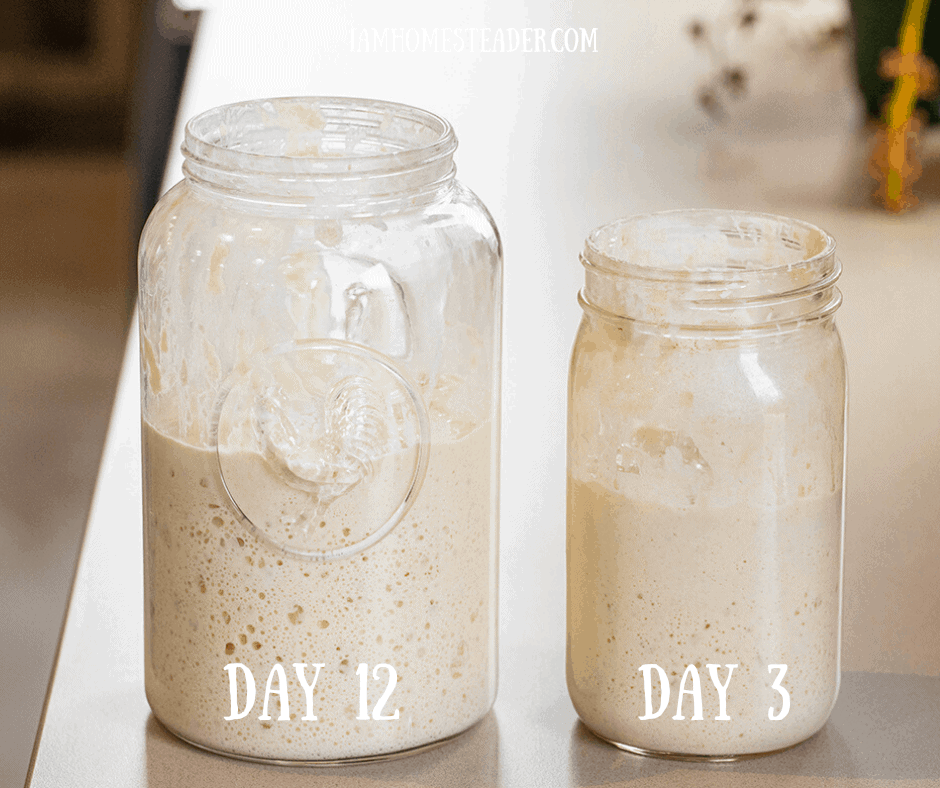
How to Store a Sourdough Starter
After all the feeding and you know you have a strong, active starter, you can store the starter in the refrigerator and feed it about once per week. When you plan to use the starter, pull it out of the refrigerator 24 hours in advance to feed it and allow it to warm up and grow.
These starters get better with age, so don’t think you have to use it right away! Sourdough starters are hearty, so they last quite a while. But, like all living things, it can get ‘sick’ or go bad. If it turns pink, red, moldy, or gets a really putrid smell, throw it out. After all, you now know how to start again!
What Flours Can You Use in a Sourdough Starter?
All grain-based flours will work beautifully in a starter. A few examples are:
- Rye
- Bread Flour
- Rice
- Whole Wheat
- Einkorn
Truesourdough.com has a great comprehensive guide to flours.
Vanilla and Bean has a great guide to Gluten-Free sourdough starter.
What to do with the Discard?
As I said, don’t throw out the sourdough starter that you remove each feeding time to make room for the starter to rise. Just make sure your sourdough starter is room temperature (about 70°F) before using it in baking. Here are some ideas on how to use (and enjoy) the excess sourdough starter.
- Sourdough Bread (not until day 6 or 7)
- Sourdough Pancakes (seriously SO GOOD!)
- Sourdough English Muffins
- Sourdough Brownies
- Sourdough Pretzels
- Cinnamon Rolls (the best!)
- Banana Bread
- Sourdough Crackers (like saltines)
- Sourdough Chocolate Chip Cookies
- Sourdough Pasta Noodles
As I mentioned, this is how *I* make a starter. King Arthur recommends 1 cup flour and 1/2 cup water and they suggest you weigh ingredients with a scale. (This is the same equivalent that I use, just doubled.) Pro Home Cooks has a great free downloadable Sourdough guide for those who really want to understand the science behind it.
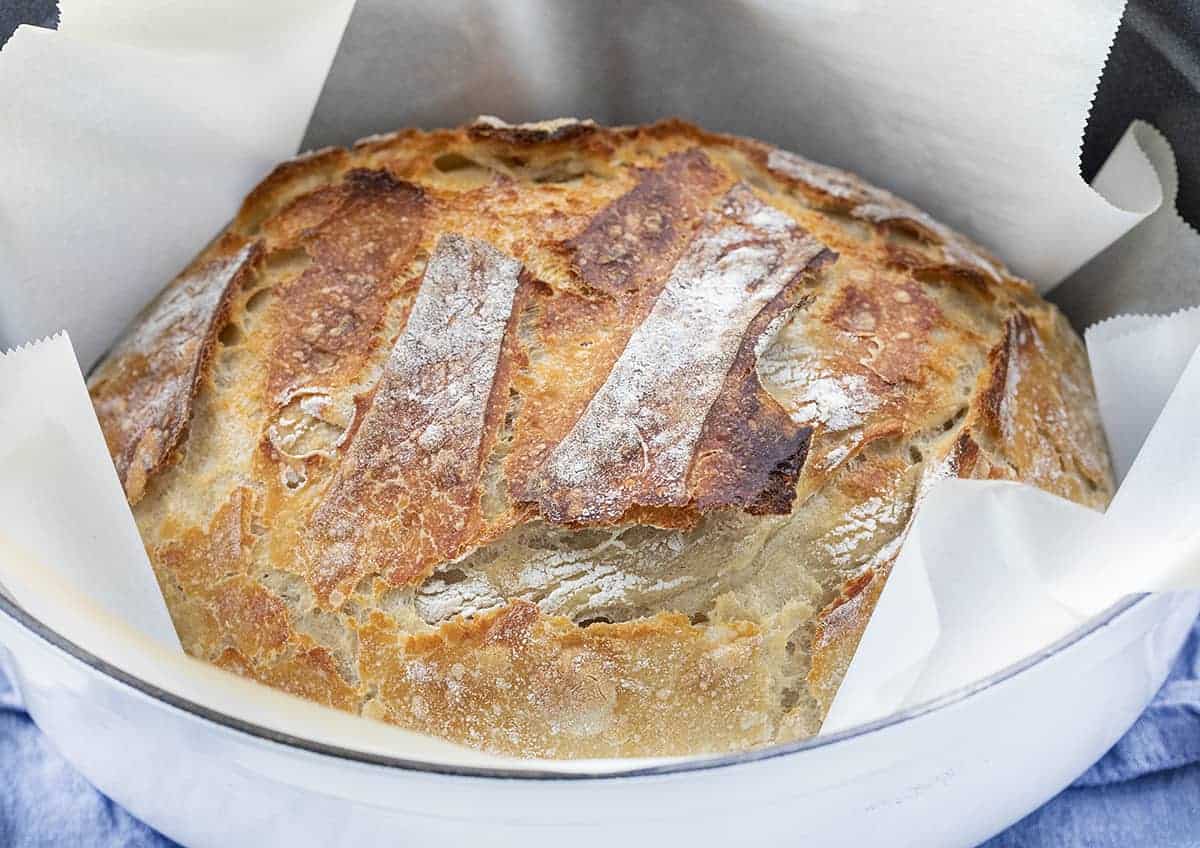
Here is the recipe for Simple Sourdough Bread!
More Sourdough Recipes

Sourdough Starter
Ingredients
- ½ cup flour, whole wheat or unbleached all-purpose
- ¼-⅓ cup water*, 75°F is ideal
- 1 glass jar, or bowl (about 32 ounces)
- 1 paper towel
- 1 rubber band
Instructions
TO BEGIN
- Start the process by adding ½ cup whole wheat flour and ¼ cup water to the jar. (If you need more flour to reach a pancake batter consistency, you can add up to ¼ cup more.) After letting it rest for 30 minutes, stir the mix with a wooden spoon. Set aside until the first feeding.
THE FIRST FEEDING
- Stir thoroughly and cover with a towel and rubber band. Let sit for 24 hours at room temperature. (Try to keep it in an area of your house that is somewhat warm. Very cool rooms tend to slow the action of a starter.)
- After 24 hours, check the mixture for bubbles. If you see some, add ½ cup all-purpose flour and ¼-⅓cup water. If you don’t see bubbles, give it a stir and let sit 24 more hours.
THE SECOND FEEDING
- Check for bubbles again. If you do see bubbles, remove half of the starter, add ½ cup all-purpose flour and ¼-⅓ cup water and stir thoroughly. Let sit 24 hours.
THE THIRD FEEDING
- Remove half of the starter, and feed with ½ cup all-purpose flour and ¼ cup water, stirring thoroughly. Let sit 24 hours.
ADDITIONAL FEEDINGS
- On days 4, 5, 6 you can feed it 2 times a day, if you want and plan on using it.
- Continue this routine until the starter is consistently bubbling and doubling in size within 8 hours of each feeding.
- From this point (or even on day 5), you can store the starter in the refrigerator and feed it about once per week. When you plan to use the starter, pull it out of the refrigerator 24 hours in advance to feed it and allow it to warm up and grow.
Video
Notes
Did you make this recipe?
You can tag me at @iamhomesteader.
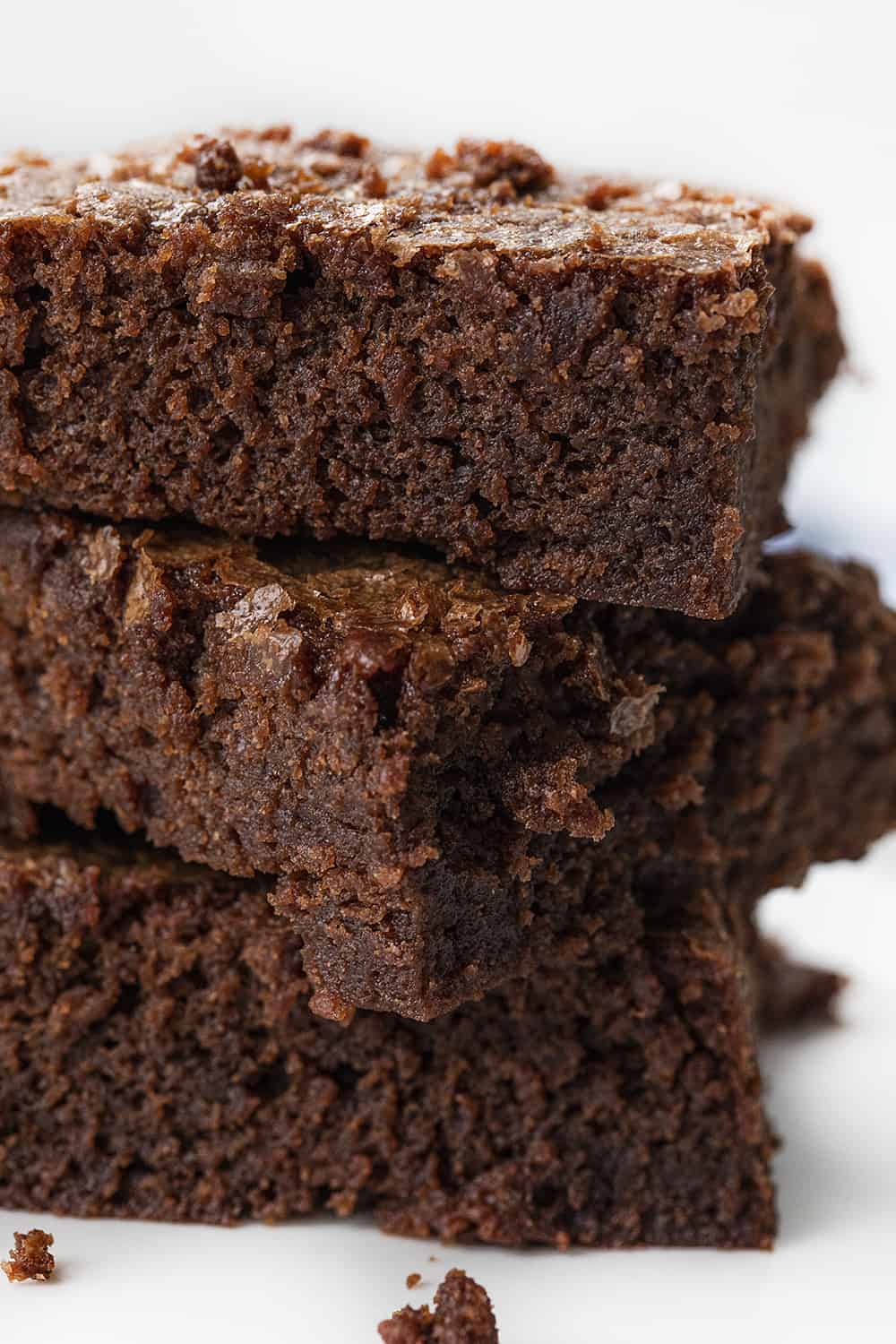
I used this starter to make seriously decadent Chocolate Sourdough Brownies!

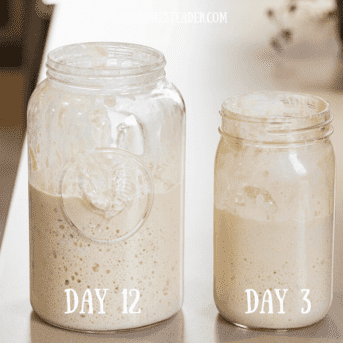
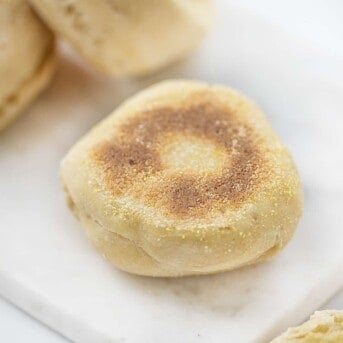
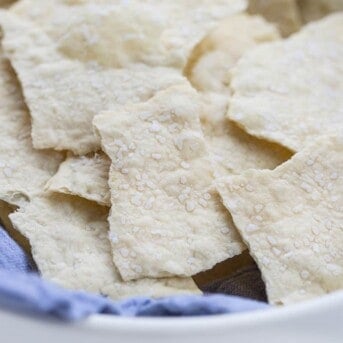
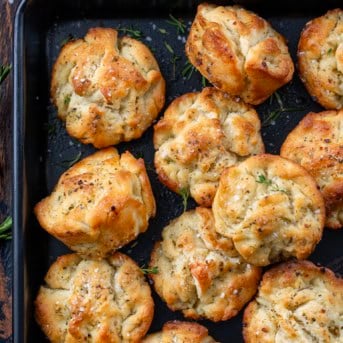

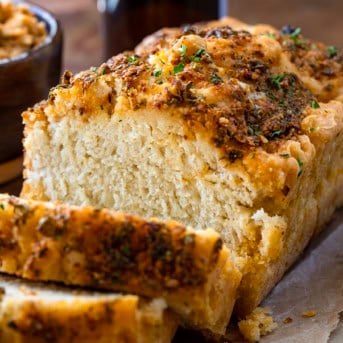

When you decide to put ithe starter in the fridge…do you remove half the starter before you feed it..does it need to warm up before feeding..thank you..
I remove some so that there is about 1 cup in the jar. However, I have placed a fed starter in the fridge and it was fine.
Hi! Thanks for this! I lost the page and was going from memory – fed on day three without removing the “discard.” Can I still use this, or do I need to start over?
You should be fine. 🙂 Just remove some tomorrow.
My starter smell like rotten egg, is it suppose to be like this? Mine have lots bubbles.
If your starter smells unpleasant – like rotten eggs, or vomit, or something equally disgusting it may have become contaminated with less friendly bacteria. Don’t give up – it is often possible to resuscitate your starter. Wash a clean jar, and add a teaspoon or so of starter from your smelly batch.
Is there a different pretzel bite recipe to use the excess in? The link at the top takes us to a recipe you say isn’t for sourdough.
Yes I would love to know as well!
Sourdough pretzels recipe please
I keep my home cool in winter/spring…64°F
How will this affect my starter?
It will grow slower, you may need a few days to get it started. Or you can find a warmer spot (like laundry room or boiler room). Just keep it covered with paper towel and rubber band so no dust gets in.
by the end of day 7, do we use the whole starter dough to bake the loaf or can we keep some of it to keep feeding to bake other loaves? Do we need a bigger jar to be able to feed the starter?
YOu won’t need the whole starter to bake a lof, but you could probably make a couple of loaves! But yes, at the end of day 7 is where you decide on whether you want to pop it in the fridge (1x a week feedings), keep it on your counter (daily feedings) or discard altogether.
Question – on days 4,5 and 6 do you remove half the starter before feed on each day?
Yes! Remove before feeding. 🙂
When i store the finished starter in TGE refrigerator, do I still cover with a paper towel or use a closed lid on TGE jar?
Thanks
Stored in the fridge it should be covered.
Are you removing half of the starter every time you feed after day 2 , ie. The days you are feeding twice?
Yes
Hi- can you use the starter for bagels?
Yes
Amanda,
Quick question: What do I do with the half of. starter that I will be removing from 2nd and 3rd feeding? Just toss it away? Or I can use it to bake a loaf?
Thanks
You do not start removing until the 3rd day. The sourdough starter is not ready for Sourdough Bread until day 6 or 7. You can make other things with the discard, as I have listed in the post. 🙂
Do you need to keep discards separate or can they be combined each day? I’m totally new to starters and would like to make use of the discards.
And what is the difference between the discards that can be used and the Final starter?
I’m on day 4, every time I add, I need to take some out, right?
Yes!
What size Jars are you using?
Quart and sometimes bigger.
I’m thinking of baking the sourdough in a loaf pan (sandwich bread). How long to bake and at what temperature? Thank you!
I am anxious to get this started. Thank you so much for this information. I will let you know how it turns out.
Can you freeze the starter
I can’t wait to try this. Thank you
Thank you for the simplicity of the starter. Can’t wait to start. You make it sound foolproof, I can gum up any recipe, it seems. Can’t wait to make brownies on day three.
I live in Denver, does elevation matter?
https://www.culturesforhealth.com/learn/sourdough/how-altitude-affects-sourdough-baking/
Here is some info for you.
Can you use self-rising flour for this
How much starter do I use when making a loaf of bread?
Here is a recipe: https://iambaker.net/simple-sourdough-bread/
How much started do I use??
How long do you bake it for ? At what temp ?
Here is a recipe for sourdough bread: https://iambaker.net/simple-sourdough-bread/
Hello, I am confused about the starter.
There is no mention for days 4,5,6, if I am supposed to take out half the starter with each feeding?!
Richard, I just came the ask the same question! I’d love to know the answer. The day 3 instructions have you taking half the starter out, but then says do this for the third feeding. Why not include that in the Day 4 instructions? Is it a typo? Then, what to do with all the jars of spare starter? I don’t want 19 jars of starter lying around. Should I pop it in the fridge and let it hang out until I’m ready to use it? If you can use the discard after only 3 days, will it really be strong enough (like have enough yeast to raise bread?) Gah! I have questions! I didn’t take the second half out of the jar in the day 3 instructions and am wondering if I messed it up. Help, I Am Baker! I don’t want to waste my flour.
I’m not sure what you mean by “why not include the Day 4 instructions”. They are written in the post (which I recommend reading) and as detailed as I can possibly make it.
You can either BAKE with starter or DISCARD it. Use it or lose it so to speak. When you have established a healthy starter (day 6-7) then you can use it to make Sourdough Bread or place it in the refrigerator and discard+feed once a week.
Amanda, thank you for your response! After posting this I did go back and realized I was reading inside the post still and not the directions that were listed at the end. The directions at the end were much clearer (for the girl 😳). I was confused inside the post explanation where it states twice in the day 3 instructions to discard half (I thought those were the instructions). In the instructions at the end you explained it as feedings rather than day 1, 2, 3… and said to discard every feeding to help it rise. That cleared everything up. I just wondered if the discarded starter would be strong enough to use right away if it wasn’t in the 6-7 day range. Can I continue to toss the discard in the same jar? I hate to toss it but also don’t want multiple jars of started started. Hope you don’t think I was giving you attitude! I’m the kind who jokes quite a bit and tone is hard to convey in text. You’re awesome.
Hey Andrea- so glad you found the information needed! A 3-4 day old starter has not been strong enough to produce a good sourdough loaf in my experience, but I guess it could be different for others? I often use my discard in baking, but also to start new jars of starter. Hate to throw it away! 🙂
It says,”discarding with each feeding”